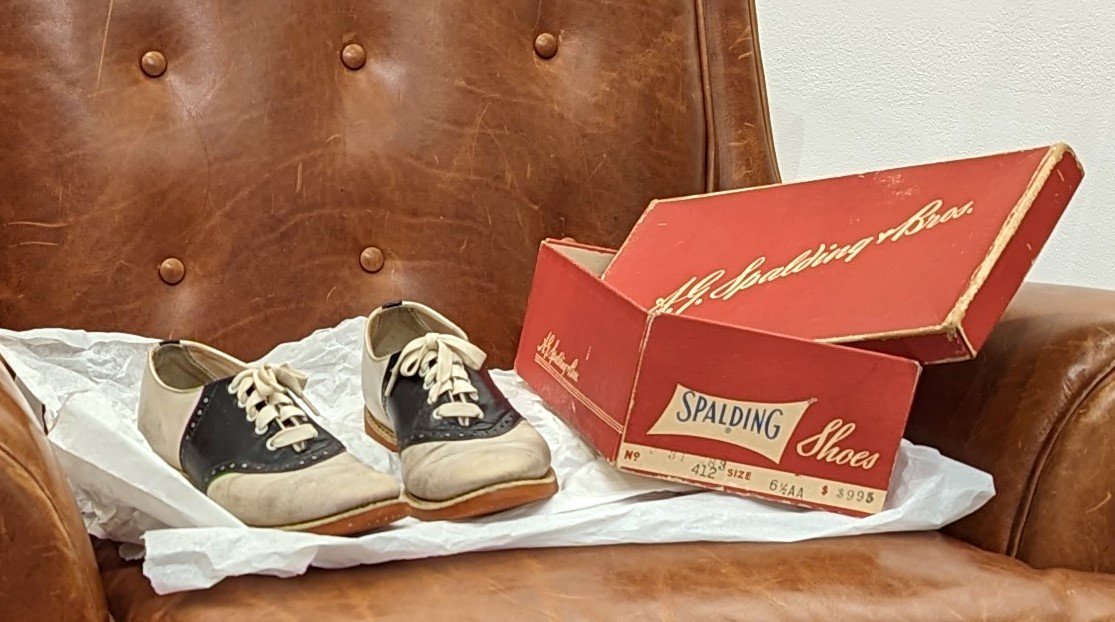Exhibit Curated and Digitized by Vincent Bruno
Introduction
Between 1945 and 1965 many Lynchburg families relied on shops and department stores along Main Street for their holiday shopping needs. They “bought local” from businesses like S.O. Fisher, Leggett’s, and Miller & Rhoads. Take a peek under the tree of a Lynchburg home on Christmas Day in the mid-20th century, filled with gifts from Main Street.
Henry Ross Men’s Store Christmas Poster, 1949
Gift of David Robbins 91.23.7
Framed Patterson Drug Co. Christmas Advertisement Poster, 1949
Gift of David Robbins, 91.23.9
Lynchburg and Holiday Traditions
Christmas has been celebrated in Lynchburg since the first European settlers arrived in the mid 1700s, however some colonies and settlements that were loyal to British rule did not celebrate it. Religious reforms in Europe changed the way some people viewed Christmas, for instance the celebration of the holiday was outlawed in Massachusetts Bay Colony from 1659 to 1681. While colonies like Jamestown and the surrounding Virginia settlements, however, made sure that Christmas was celebrated statewide. Santa Claus increased in popularity in the area after 1829 when the poem “twas the night before Christmas” written by Clement C. Moore was published. Virginia continued to celebrate the holiday and become the 5th state to legally recognize Christmas in 1849. Later the nation would recognize Christmas Day by creating a federal holiday in the United States in 1870 ensuring its continual celebration on December 25th every year for perpetuity. For the greater portion of the 20th century, gifts such as toys, clothes, appliances and jewelry were all sold in Lynchburg’s iconic Main Street department stores, such as Leggett’s, Millner’s, Guggenheimer's, Woolworth’s and J.C. Penney which were the places to be during the holiday season in Lynchburg. These stores had an array of attractions for Christmas shoppers such as decorations, music, animated characters, dreamy window displays and even Santa Claus himself visiting. These department stores and their influence on cities, states and the nation attempted to entice the commercialized patrons of the time during the holiday season and would lead to traditions in the homes of many for generations to come. Not only were the stores on Main Street revered during the holidays, but so was the street itself, as the iconic annual Christmas parade traveled down its blacktops for years as it circled around downtown Lynchburg with floats being decorated by local groups, associations and businesses. Later the parade moved into the more suburban area of the city. Once the Pittman Plaza opened away from downtown many Christmas traditions such as seeing Santa and the Parade also moved from the downtown after decades of success during the holiday season. For most of the city's history Lynchburg's Main Street and Downtown were the epicenter for experiencing and celebrating the holidays.
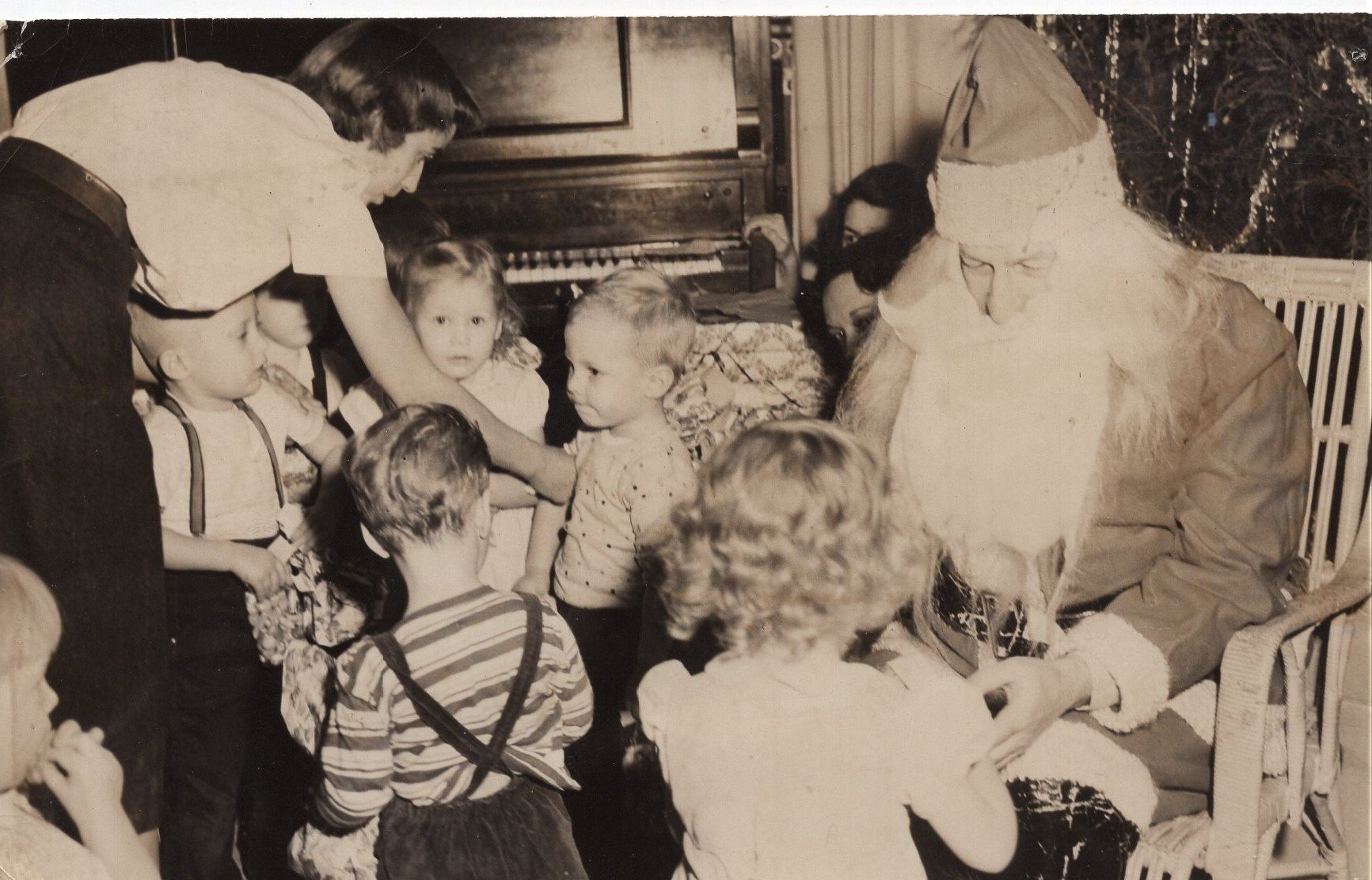
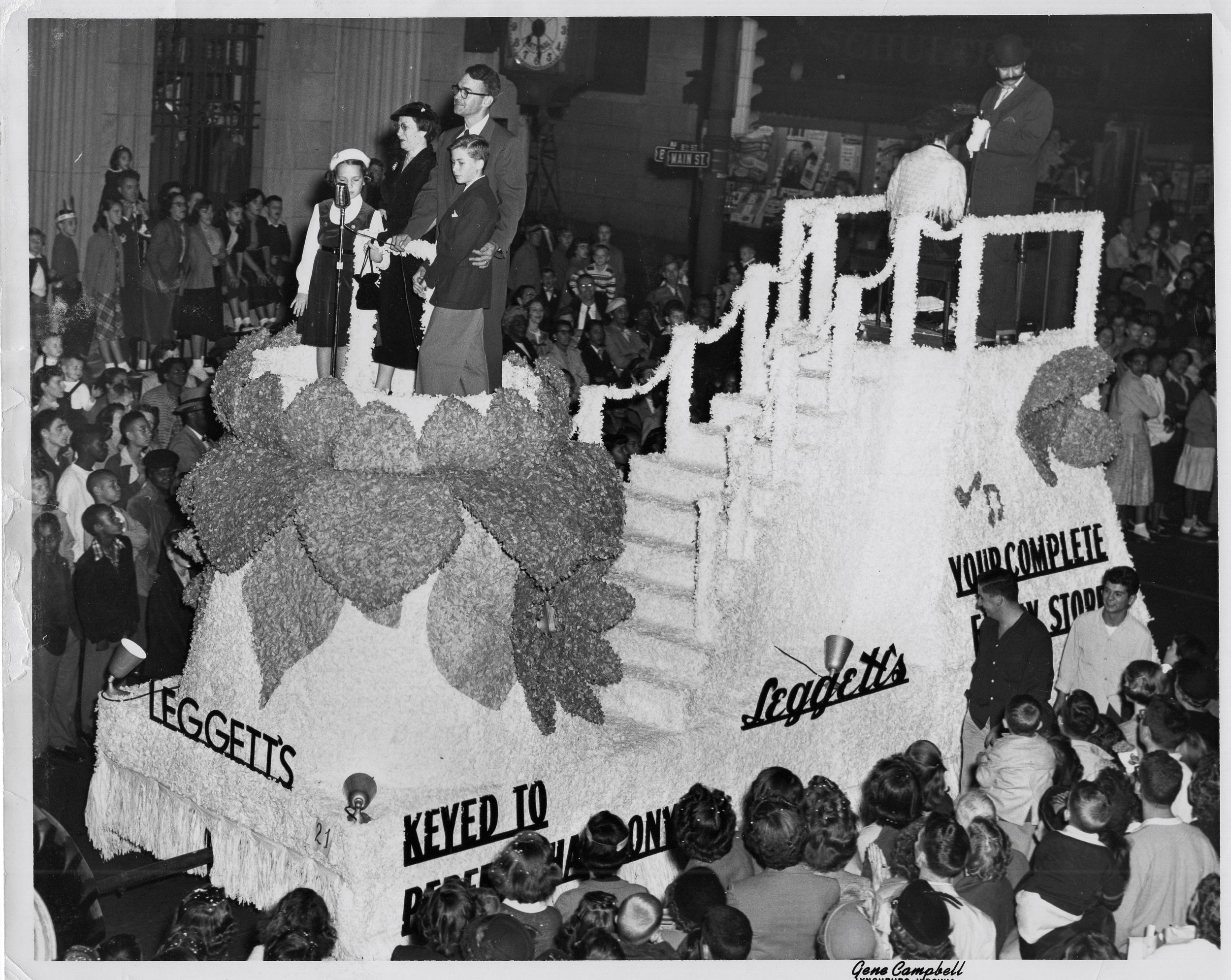
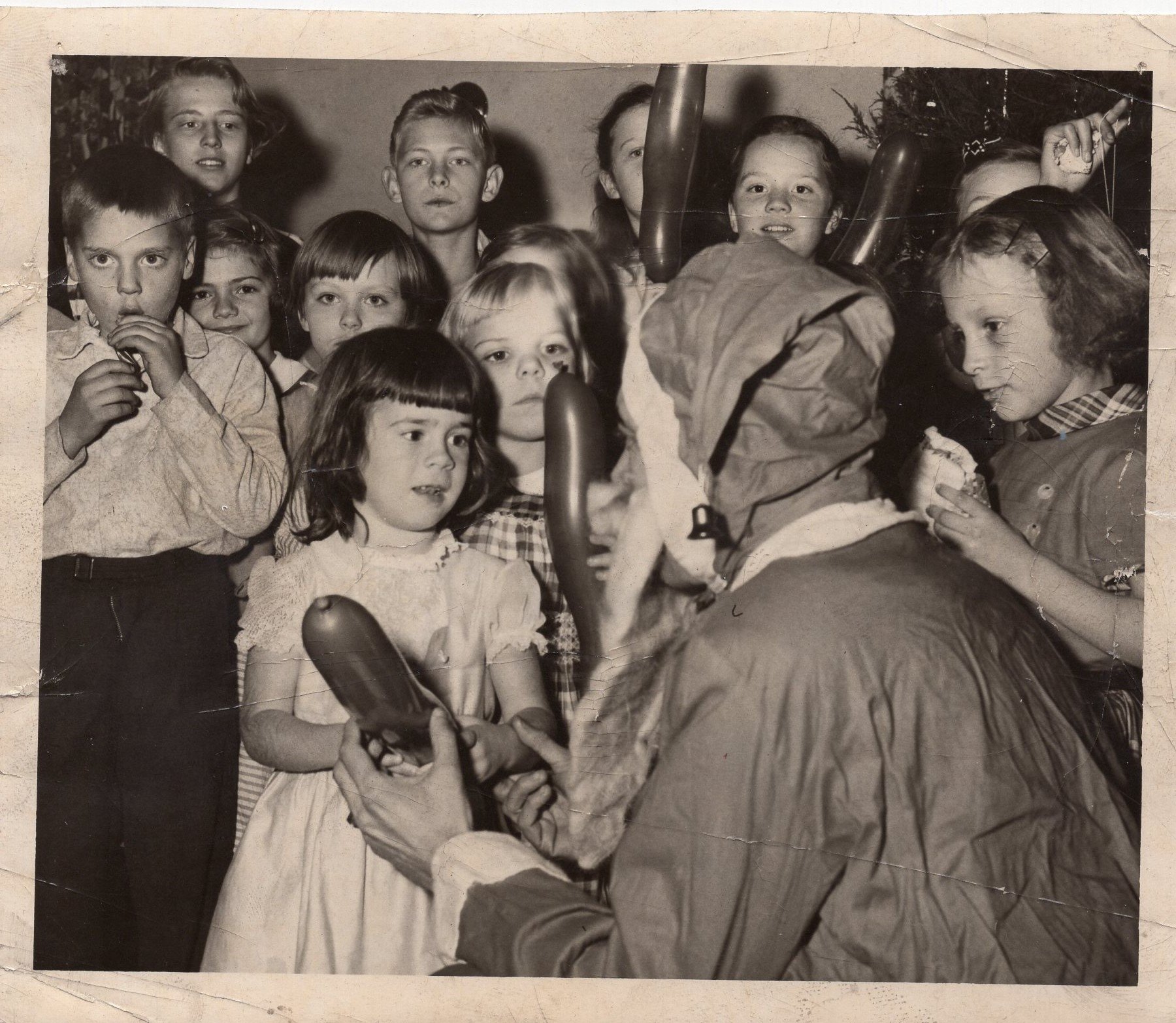

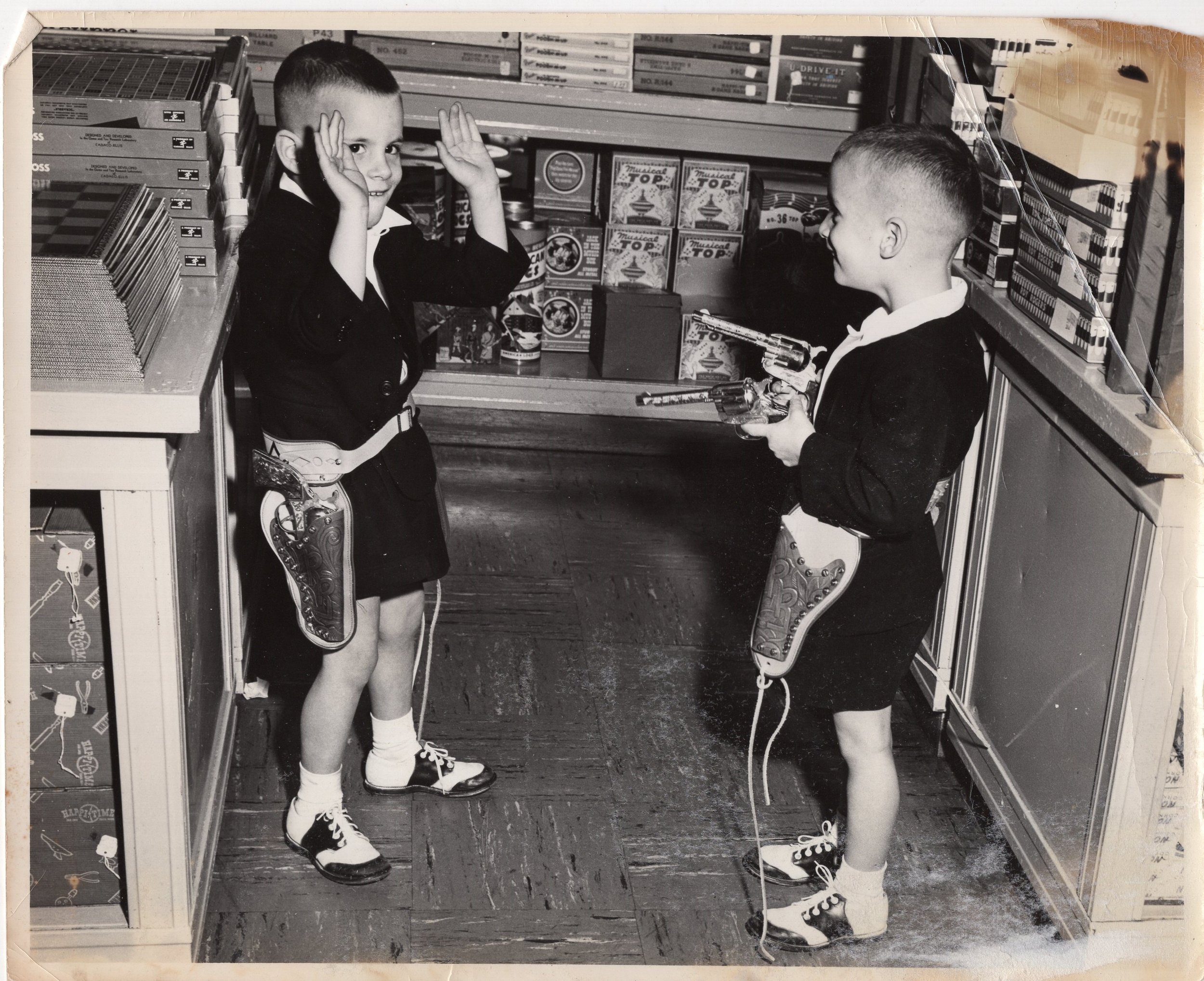
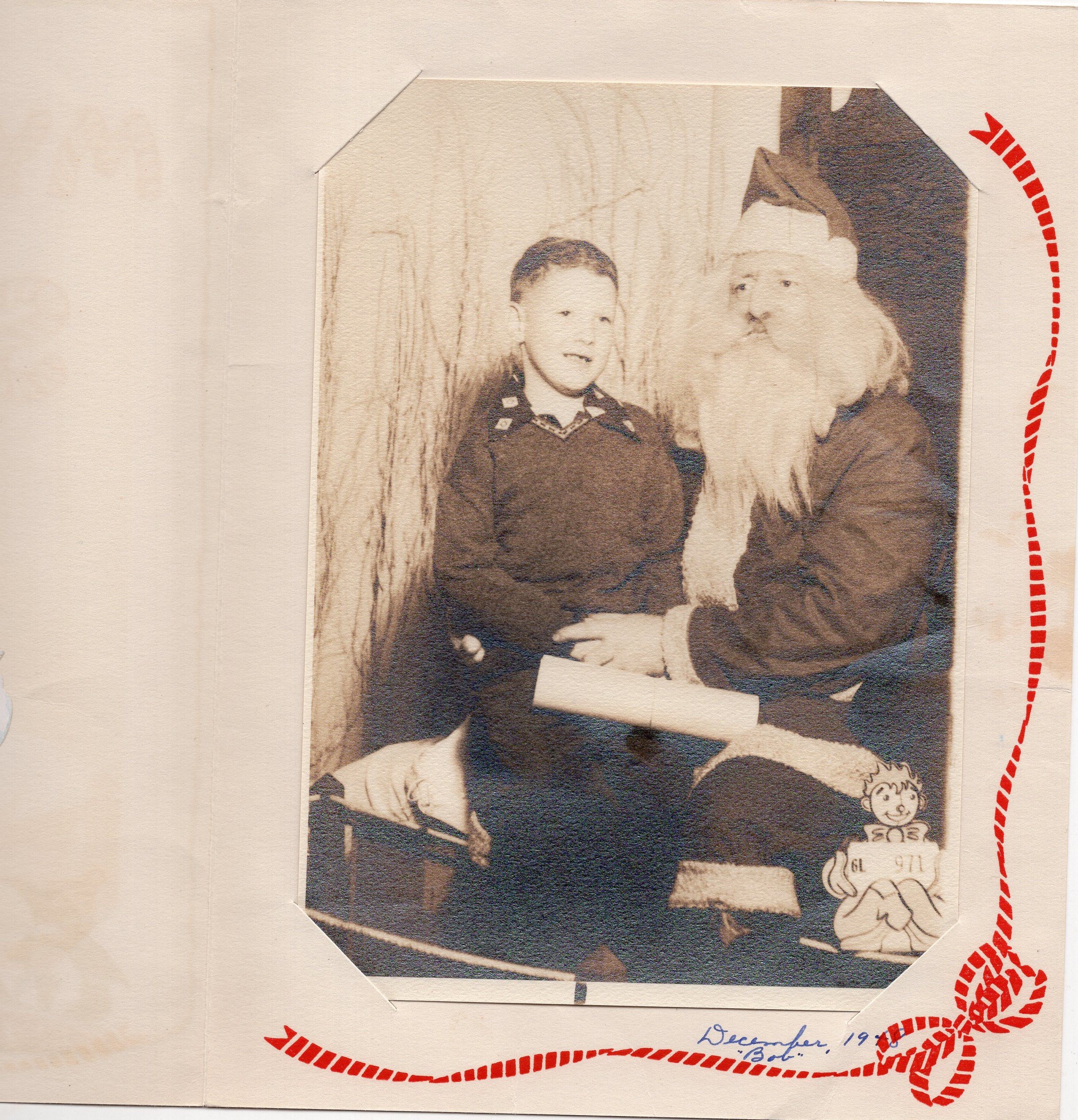
Mid-Twentieth Century Living Room Display with gifts and items from Main Street Department Stores of the era.
Mid-20th Century Holiday Originals
Pop Culture Timeline
1944: "Have Yourself a Merry Little Christmas" recorded Judy Garland
1945: “Let it Snow! Let itSnow! Let it Snow!” recorded by Vaughn Monroe
1946: “It’s a Wonderful Life” starring James Stewart released
1946: “The Christmas Song” (Merry Christmas to you) recorded by Nat King Cole
1947: “Miracle on 34th Street” released, Santa becomes a movie star
1949: “Rudolph the Red-Nosed Reindeer” song recorded by Gene Autry
1950: “Frosty the Snowman” song recorded by Gene Autry
1951: "It's Beginning to Look Like Christmas" recorded by Meredith Wilson
1950: “Silver Bells” song recorded by Bing Crosby and Carol Richards
1952: “I saw mommy kissing Santa Claus” recorded by Johnny Boyd
1953: “Hey Santa Claus” released by the Moonglows
1954: Bing Crosby and Danny Kaye star in “White Christmas”
1954: “There’s no Place like Home for the Holidays” recorded by Perry Como
1957: Dr. Seuss publishes “How the Grinch stole Christmas”
1957: “Blue Christmas” song recorded by Elvis Presley released
1958: “Rockin’ around the Christmas Tree” recorded by Brenda Lee
1964: “Rudolph the Red-Nosed Reindeer” T.V. film released
1965: “A Charlie Brown Christmas” cartoon debuts
1966: “How the Grinch stole Christmas!” cartoon released
Mid-Twentieth Century Recreational Gifts
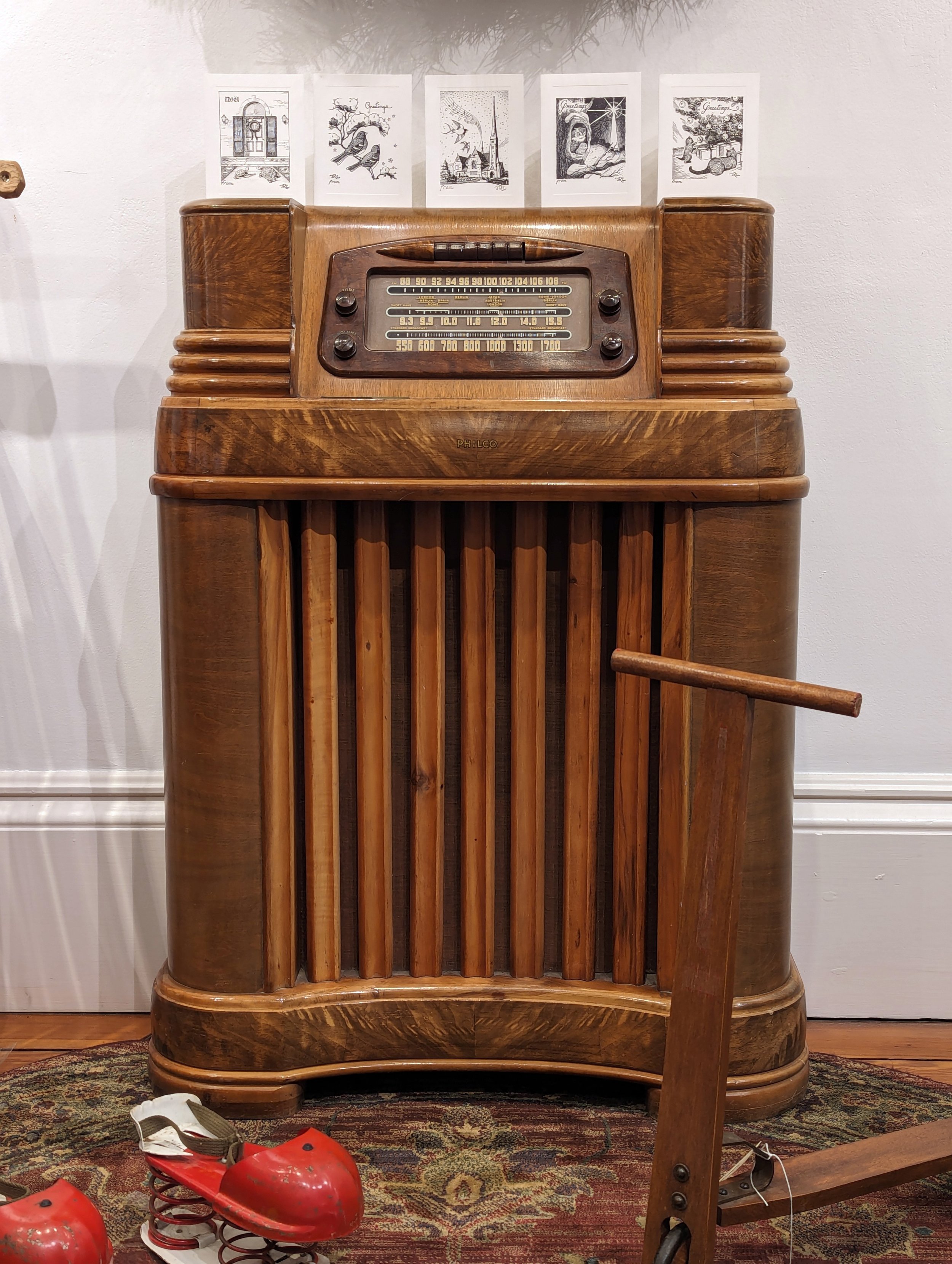
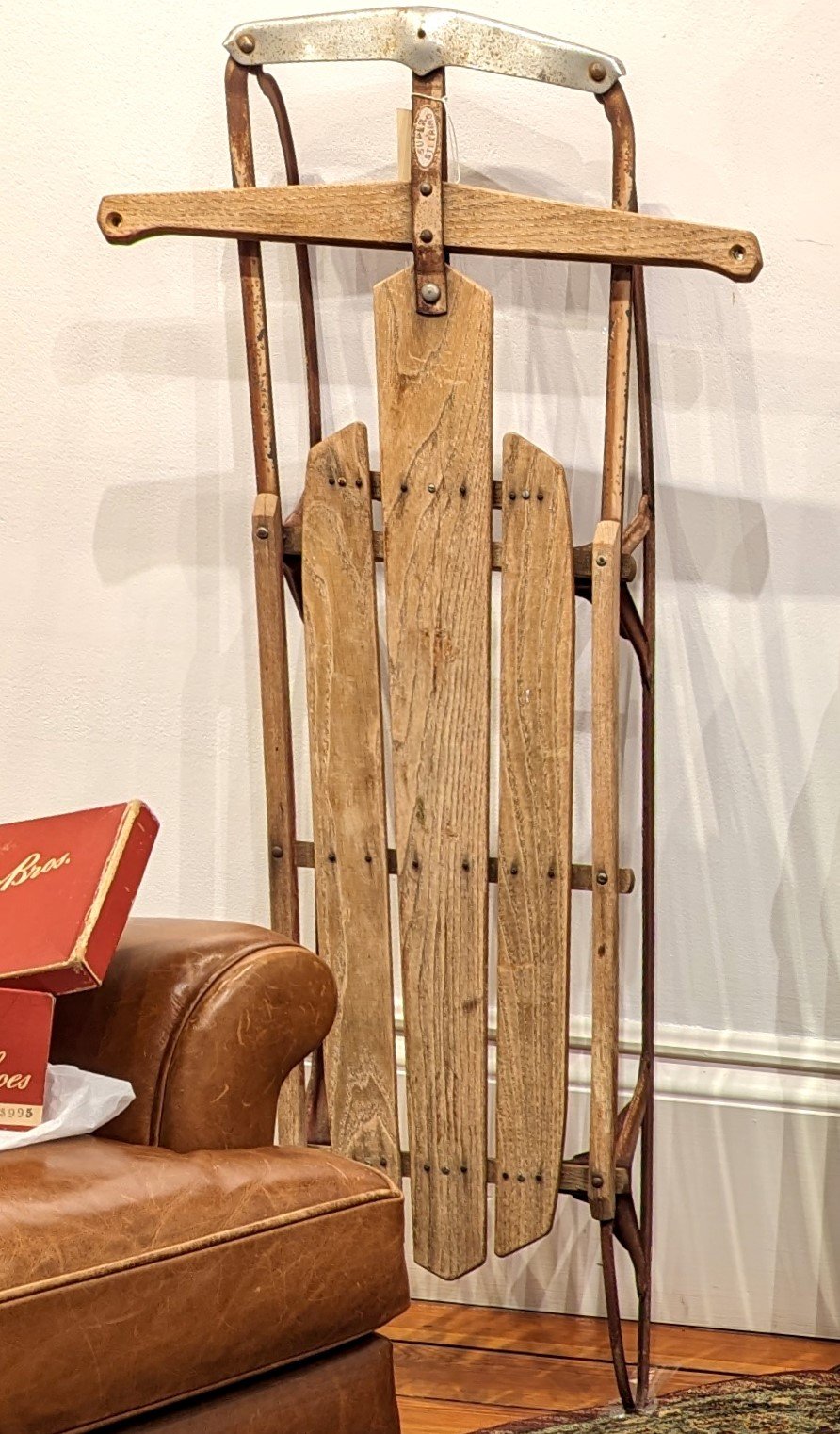
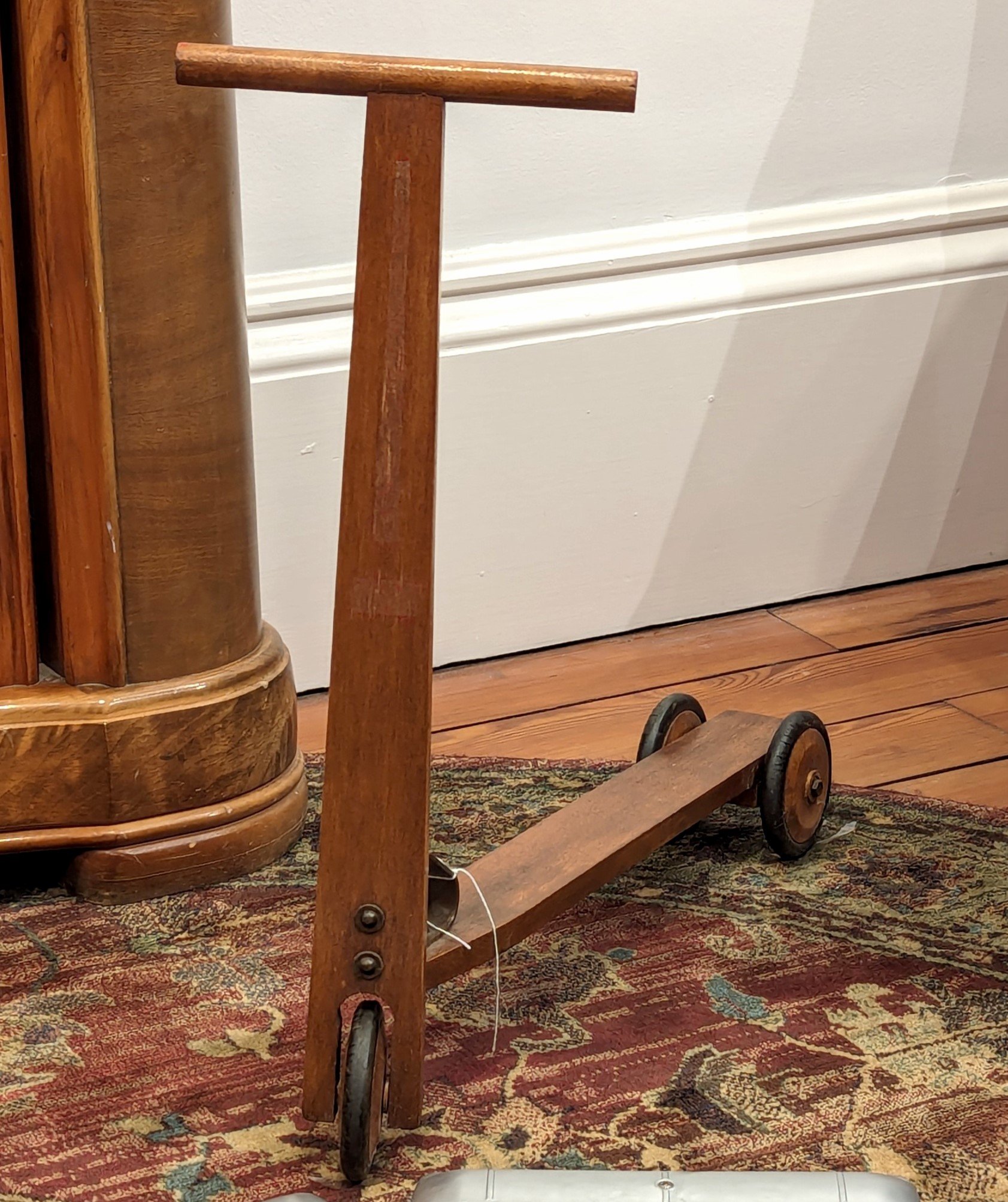
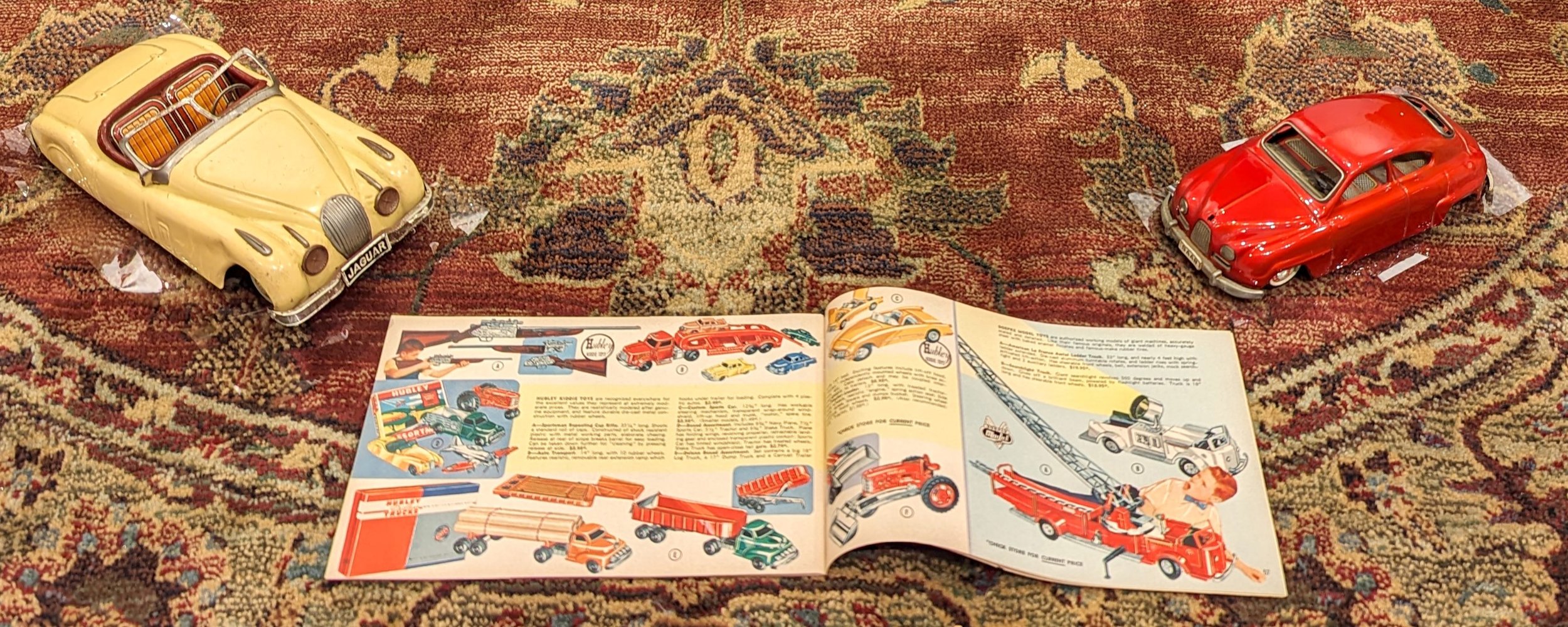

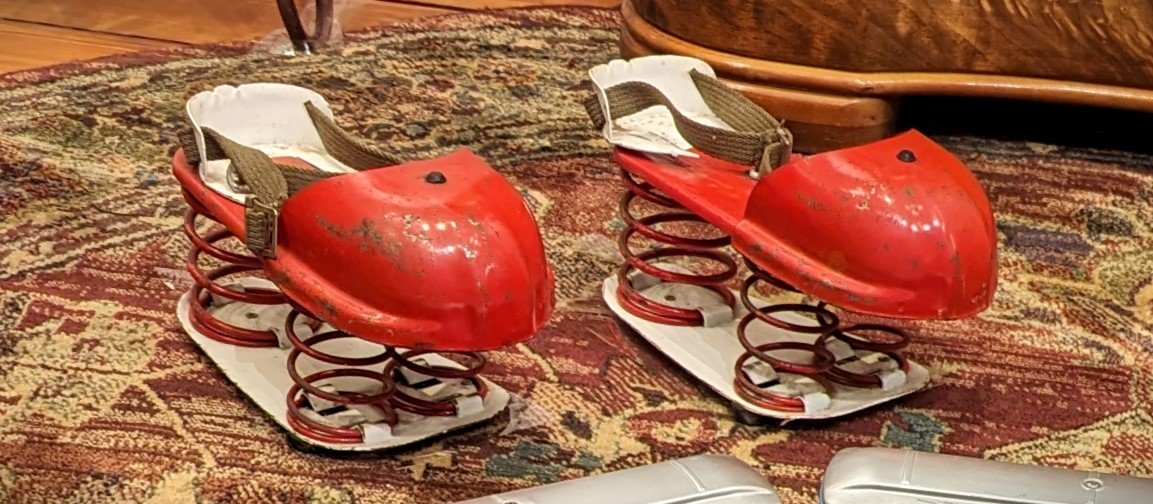
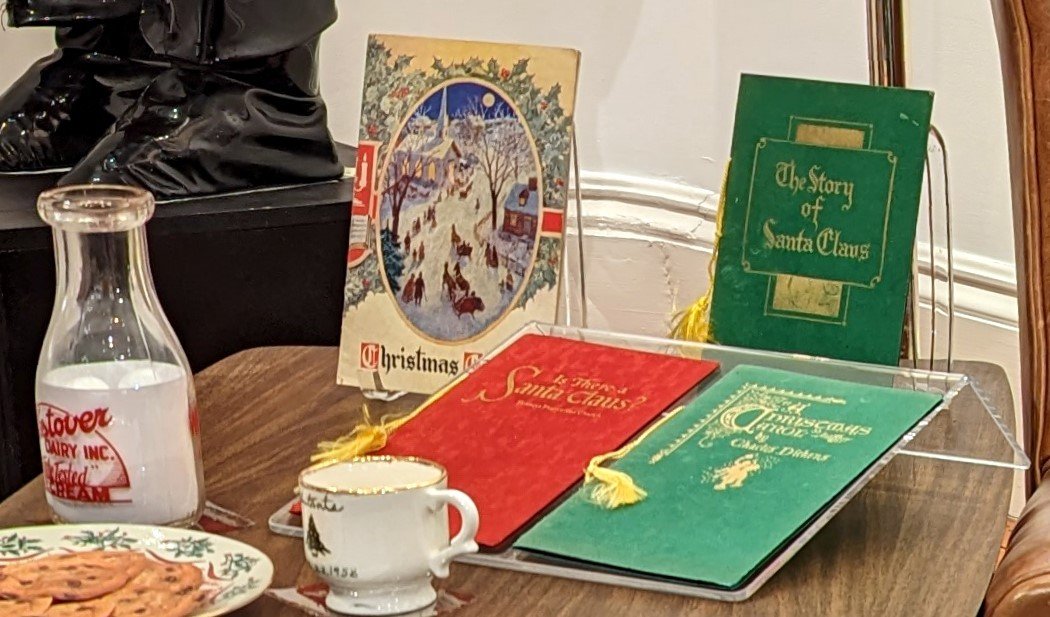
Main Street Department Stores
Guggenheimer’s Department Store
Guggenheimer’s Women’s Shoes: Spalding, Mid 20th Century, Gift of Patricia F. Elton, 2010.43.4
This is a pair of lady's size 6 1/2 AA lace-up oxford-style "saddle" shoes in black and white leather, accompanied by the original box. Purchased from Guggenheimer's Department Store, Lynchburg, Virginia, for $9.95.
The Guggenheimer family immigrated to Lynchburg in the 1840’s from Bavaria, Germany and were of Jewish descent. At this time Lynchburg was one of only five Jewish communities in the state. Two of the fifteen children of Abraham Guggenheimer, Saloman and Nathaniel, started a dry goods store in the spring of 1844. After Salomon’s death in 1848, the business under Nathaniel would undergo partnership changes, before ultimately taking on Max Guggenheimer Jr. as a partner in 1865 as Guggenheimer and Company. Later Max would take over the company before gravitating to the wholesale industry where he invested in some of the most successful businesses in the city such as Craddock Terry Shoes. His cousin Charles Guggenheimer created his own department store that opened in 1887, the first storefront was originally located at 906 Main Street in Lynchburg, Virginia. The business was so successful, however, that the owner, Charles M. Guggenheimer had to relocate the store three times ultimately settling at 1029 & 1031 Main Street in 1895. By the early-1900s the staff of the store would grow from two employees to 60. By 1912 Guggenheimers was one of Lynchburg’s most profitable, well-known businesses, doing more business than any other store in the south in proportion with its population. The store was a staple in the Lynchburg community for decades, especially during the Christmas season. Guggenheimers would decorate its store and create window displays for the holidays, but their most notable attraction was the real-life Santa Claus who would take the Christmas wishes of children while sitting on his lap. The retailer’s Santa was so synonymous with the holiday season that some other stores didn't bother to have Santa visit at all. The store was one of the oldest department stores in the county and was deeply associated with Lynchburg since the company's founding. Though the business closed in 1961 the company, along with others like Schewel Furniture and Oppleman’s, would help cement the Jewish community in the abundantly Christian town of Lynchburg, Virginia.
Millner’s Department Store (J.R. Millner Co.)
Millner’s Department Store was an upscale department store founded by a man named J.R. Millner (1862-1915). His father was a prominent merchant in a locality once known as Millner’s Store now known as Allwood, which may have been the inspiration behind J.R. working at dry-goods stores like W.W. Tyler & Co. and Guggenheimer & Co. in Lynchburg. Millner was inspired to create his own business and he opened up his first store at 802 Main Street in 1890 with three female clerks and one young boy “helper.” The store experienced great success and by the early 1900s it was considered one of the finest and largest department stores in the city and possibly the state. Mr. Millner, the company’s founder, passed away in 1915. At that time there was no family to take over the business, so the company fell out of family hands. In 1922 the building burned down, but a newer, more grand structure would rise from its ashes. The business became self known as “a store full of service” by the 1930s as they had departments and associates that would provide shoppers with luxuries such as gift wrapping, personal shoppers, delivery services, interior designers and even a telephone. These services would go as far as saying “Why worry about it? Just mail your Christmas shopping list to us.” Advertising the abilities of a Miss Jean Janis, the store's personal shopper, to find the gifts you needed for the holiday and then simply have them shipped to your door. As the store was often associated with high end merchandise, some Lynchburg residents recall that if you had a Millner’s box under your tree it was something to be excited about. Millner’s was also famous for its window displays, especially during the Christmas season. These displays by a Mr. Hawkins gained national attention and were some of the most anticipated parts of the holiday season. Hawkins would put paper over the display windows so that patrons couldn't get a sneak peak. Though highly regarded during the holiday season Millner’s Department Store was a favorite shopping and hang out spot among all ages in the Lynchburg region. Though the company flourished through most of the early 20th century, it would ultimately be absorbed by Miller and Rhoads of Richmond in 1957.
Gift Box Millner’s Department Store, c. 1950, Gift of Dr. Robert Gardner, 2002.50.1
Gift box from Millner's (1899-1957), white cardboard with Millner's in gold print centered on top.
Millner’s Hat Box, Gift of Betty Gereau, 2012.56.3
Millner's hatbox, depicting a modern façade.
Mens Hat, 1940, Gift of Margaret Corbey, 91.15.1a
Man's fedora-style purchased from S. H. Franklin men's wear store on Main Street, Lynchburg.
Miller & Rhoads
Millner’s Department Store was an upscale department store founded by a man named J.R. Millner (1862-1915). His father was a prominent merchant in a locality once known as Millners Store now known as Allwood, which may have been the inspiration behind J.R. working at dry-goods stores like W.W. Tyler & Co. and Guggenheimer & Co. in Lynchburg. Millner was inspired to create his own business and he opened up his first store at 802 Main Street in 1890 with three female clerks and one young boy “helper.” The store experienced great success and by the early 1900s it was considered one of the finest and largest department stores in the city and possibly the state. Mr. Millner, the company’s founder, passed away in 1915. At that time there was no family to take over the business, so the company fell out of family hands. In 1922 the building burned down, but a newer, more grand structure would rise from its ashes. The business became self known as “a store full of service” by the 1930s as they had departments and associates that would provide shoppers with luxuries such as gift wrapping, personal shoppers, delivery services, interior designers and even a telephone. These services would go as far as saying “Why worry about it? Just mail your Christmas shopping list to us.” Advertising the abilities of a Miss Jean Janis, the store's personal shopper, to find the gifts you needed for the holiday and then simply have them shipped to your door. As the store was often associated with high end merchandise, some Lynchburg residents recall that if you had a Millner’s box under your tree it was something to be excited about. Millner’s was also famous for its window displays, especially during the Christmas season. These displays by a Mr. Hawkins gained national attention and were some of the most anticipated parts of the holiday season. Hawkins would put paper over the display windows so that patrons couldn't get a sneak peak. Though highly regarded during the holiday season Millner’s Department Store was a favorite shopping and hang out spot among all ages in the Lynchburg region. Though the company flourished through most of the early 20th century, it would ultimately be absorbed by Miller and Rhoads of Richmond in 1957.
Leggett’s Department Store
The first Leggett family member to open a retail store was Will Leggett, who was married to the niece of the Co-Founder of Belk, John Belk. This store was under the Belk name when it was opened in Burlington, North Carolina in 1920, that same year Will’s brother Fred would open another Belk store in Danville, Virgina. In 1927 the Belk and the Leggett brothers agreed that the Leggetts’ would own 80 percent of the stores that they opened, with the remaining 20 percent being owned by the Belk Brothers Company. Until this point the Belks’ had always owned the majority of their stores. Leggett’s would become a privately-owned department store founded by Gordon Leggett Sr. and his four brothers. They opened their first store in downtown Lynchburg in 1927 and sold a wide variety of items. Almost every member in the Leggett family, including Gordon Leggett Jr., was involved in the business until it was acquired back by Belk in the 1990’s. Over the years, the chain grew to nearly 60 stores from Delaware to North Carolina. The second generation took over in 1980, after the death of the last founding brother. By the 1990’s Leggett’s would have over 37 stores in varying states. The Leggett’s didn't like to refer to themselves as a chain, but instead the business referred to itself as a "family" of stores with roughly 3,500 employees which were known as associates. In 1996 the North Carolina-based company Belk bought out Leggett’s Department Stores. While the Legget’s Department Store operated for almost 70 years, there was no other time more associated with the stores than the Mid-Twentieth Century. Patrons would love to see the elaborate window displays and many citizens remember going there for gift shopping especially during the holiday season. Perhaps the most memorable part of Leggett’s and Lynchburg for that matter during Christmas time was the animatronic Santa Claus and Reindeer that moved on the top of the building. Santa would turn and wave, while the reindeer appeared to fly. Actually there were cases of the bolts on the reindeer coming loose and the animals jumping from the roof onto Main Street. While shoppers frequented Leggett’s for decades, most remember them for their Christmas traditions during the Mid-20th Century.
Leggett’s Glass Ashtray, Mid 20th Century
Gift of Frank Billingsley, 2021.5.1
This is a promotional advertising item. It is a clear glass ashtray with a Leggett Department Store logo printed on a teal sticker pasted to the underside of the tray.
Leggett’s Department Store Bag, 20th Century, 71.11.4J
Leggett’s Department Store Santa and Reindeer Display
F.W. Woolworth & Co.
F.W. Woolworth (Woolworth’s) was successfully formed by Frank Winfield Woolworth in 1879 in Lancaster, Pennsylvania. The company established many of the standards which are still used in retail today such as supplier partnerships, loss-leading, enhancing supply chains and strict, persistent branding.These practices allowed for great success, leading to F.W. Woolworth and Company being formally incorporated in 1905 and going international in 1909. Woolworth would soon build its 792 foot tall corporate office building in 1913, making it the largest building in the world until 1929. Some Lynchburg residents recall that mid-twentieth century Woolworth’s was considered the prominent soda fountain in the city at the time, many department stores would have waiting areas similar to this and some mothers would even leave their children there while they shopped. Department store retail faced strong competition as shopping habits evolved over the course of the next few decades. The well established brand reacted with a massive investment campaign by relocating many of its stores to Malls and converting them to self-service. With these changes occurring in the economic environment the store started to struggle to keep up with competition in the later part of the 20th century and by 1997 all U.S. stores would close and the company renamed itself as the Venator Group, who still owns companies such as Foot Locker in the present day.
Montgomery Ward & Co.
Montgomery Ward was founded by Aaron Montgomery Ward in 1872 in Chicago, Illinois. The company's goal was to make their products easily accessible to the general public, particularly those who lived in agricultural and rural communities. On August 18th, 1872 Ward printed their first catalog on a single sheet of paper that displayed 163 unique items, with the slogan “satisfaction guaranteed or your money back” which was an industry first. What made this catalog stand out from its predecessors was its accessibility to the general public, up to that point most catalogs were targeted for industrial purposes or for the social elite. The catalog proved to be a great success and it would grow exponentially into the 20th century, with catalogs expanding to over 150 pages with thousands of items for over 3 million subscribers on the mailing list. Montgomery Ward moved into the retail end of business in 1926, growing so drastically that there would be over 500 stores nationwide in 1930, making it the largest retailer in the United States. One of the most recognizable creations of the company was actually a Christmas story used as a promotional gimmick for holiday shoppers to replace coloring sheets that were previously used. The story was written by Robert May in 1939 about one of Santa Claus’ reindeer which was titled “Rudolph the Red-Nosed Reindeer”. This story would become a household tradition for a majority of families during the holiday season for decades to come. The story is known for inspiring works like the famous 1949 song written by Johnny Marks and sung by Gene Autry, and also the timeless 1964 stop motion T.V. movie with which both bore the same title. The book, song and movie are still considered a paramount part of the holiday season to many to this present day, showcasing the impact department stores like Montgomery Ward had on the lives and culture of the nation. In the later part of the 20th century the company would undergo several changes before releasing their last catalog in 1985. In 1997 the company filed for bankruptcy and soon closed the last of its physical retail stores. Montgomery Ward still remains in business today and primarily does its sales through E-commerce.
Original copy of “Rudolph the Red-Nosed Reindeer” the story written by Robert May in 1939 about one of Santa Claus’ reindeer.
J. C. Penney Co.
J.C. Penney Co. was founded on April 14, 1902, when founder James Cash Penney and some partners opened the Golden Rule, a dry goods store in Kemmerer, Wyoming. Over the next two years, the store expanded to more Wyoming frontier towns, and in 1907 Penney bought out his original partners. With its continued expansion to over 34 stores in the American West, it was incorporated on January 17, 1913, as the J. C. Penney Stores Company. The company moved its headquarters to New York City, New York in 1918, preparing the business for its national expansion. In 1927 the J.C. Penney Co. went public for trading on the New York Stock Exchange. By 1930, the number of stores had risen to over 1,392. James Cash Penney decided he would retire in 1946, while retaining the role of honorary chair. In 1958, the company shifted its traditional sales approach to allow sales on credit through the use of store credit cards, and by broadening its merchandise to compete with large department stores like Montgomery Ward, Woolworth’s and Sears. The company started transitioning into mail-order sales in 1962 when J.C. Penney acquired the General Merchandise Co., allowing the first Penney Catalog to be published in 1963. In the late 1960’s the store would take its business international by opening locations in Europe, then in Central and South America in the 90’s, before closing the international division in 2003 due to declining sales. In the 21st-Century J.C. Penney started to fall into decline in part from the competition of big-box discount stores like Wal-Mart and Target. The 2008 financial crisis would ultimately prove to accelerate this decline in sales and many attempts were made to save the store. Ultimately it would be the Covid-19 pandemic that would prove to be the last nail in the coffin for the once prosperous organization, with the retailer filing for bankruptcy in 2020. That same year Simon Property Group and Brookfield Asset Management, two of the largest property owners in the U.S., hired a new CEO who plans to renovate all remaining stores by 2025.
Mid-Twentieth Century Lynchburg Main Street Holiday Decorations
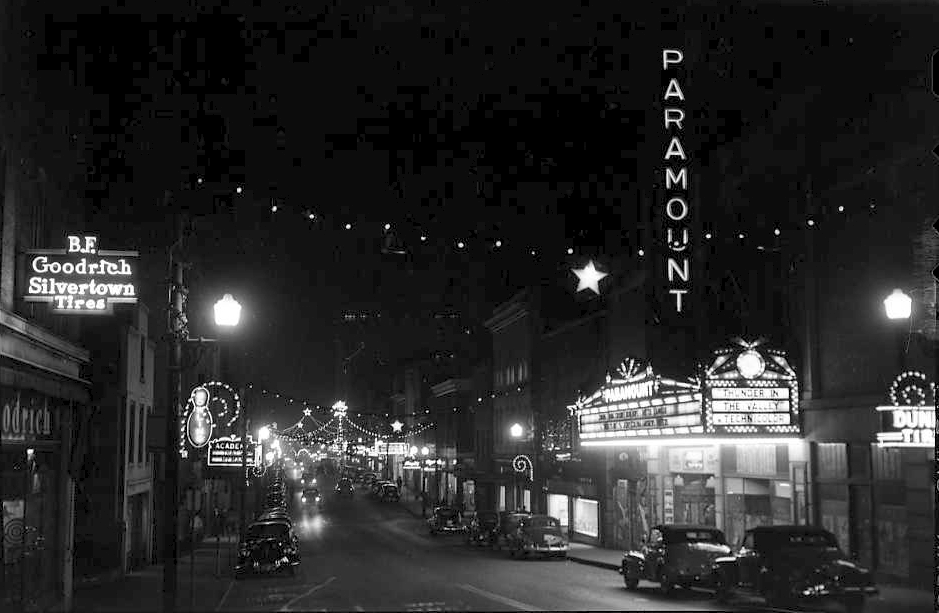

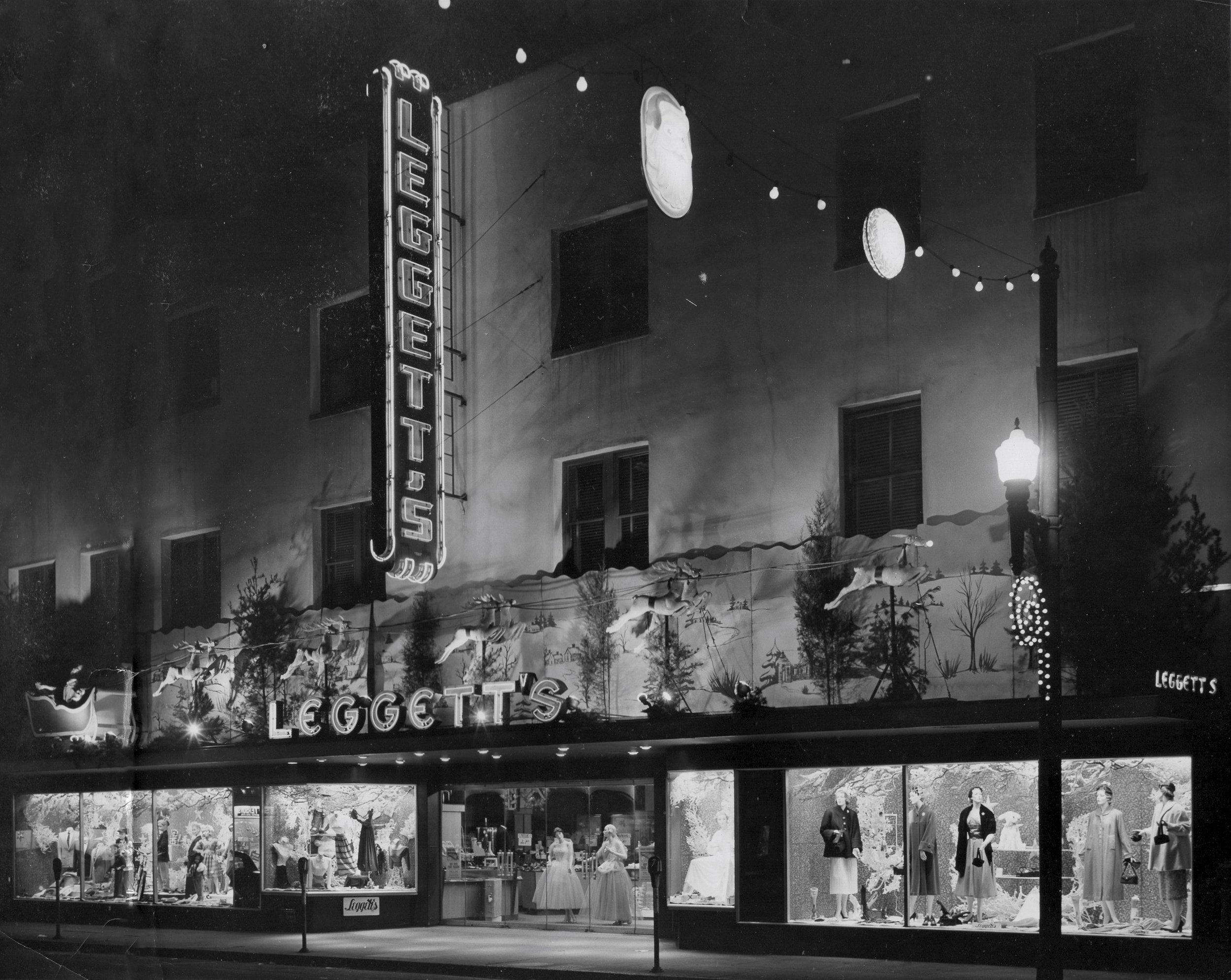
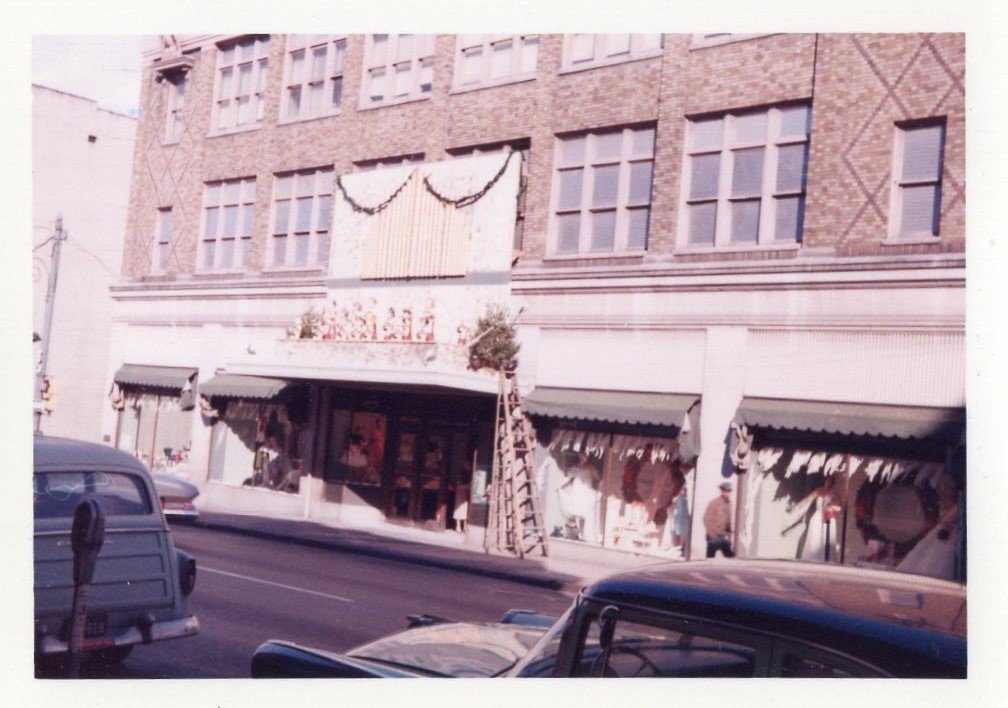
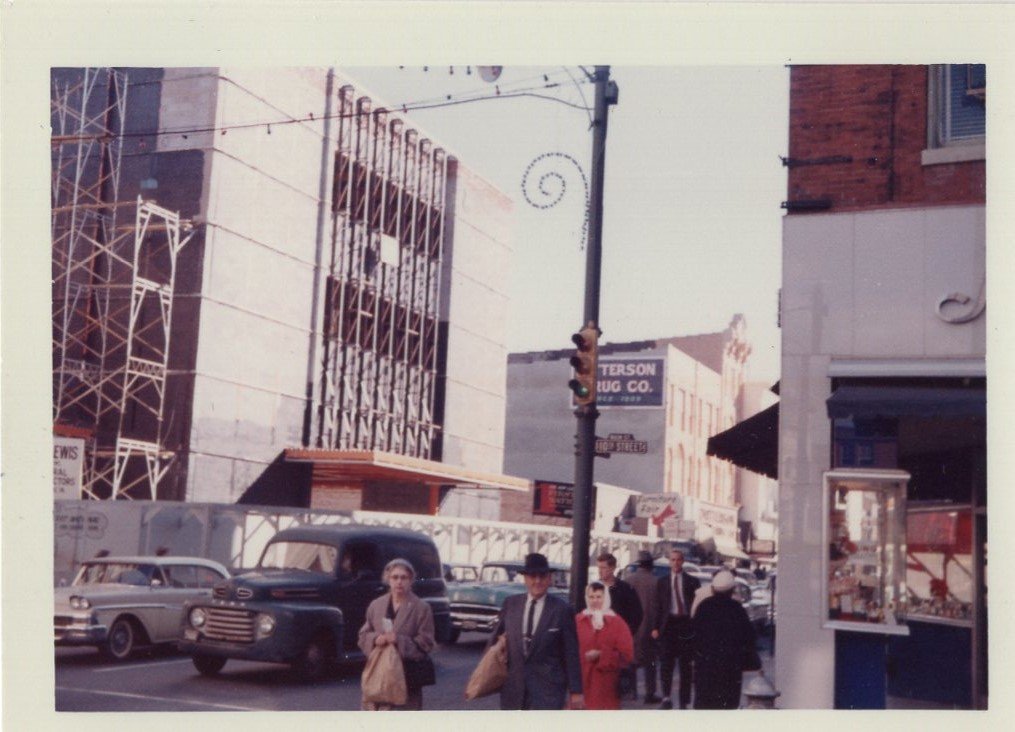
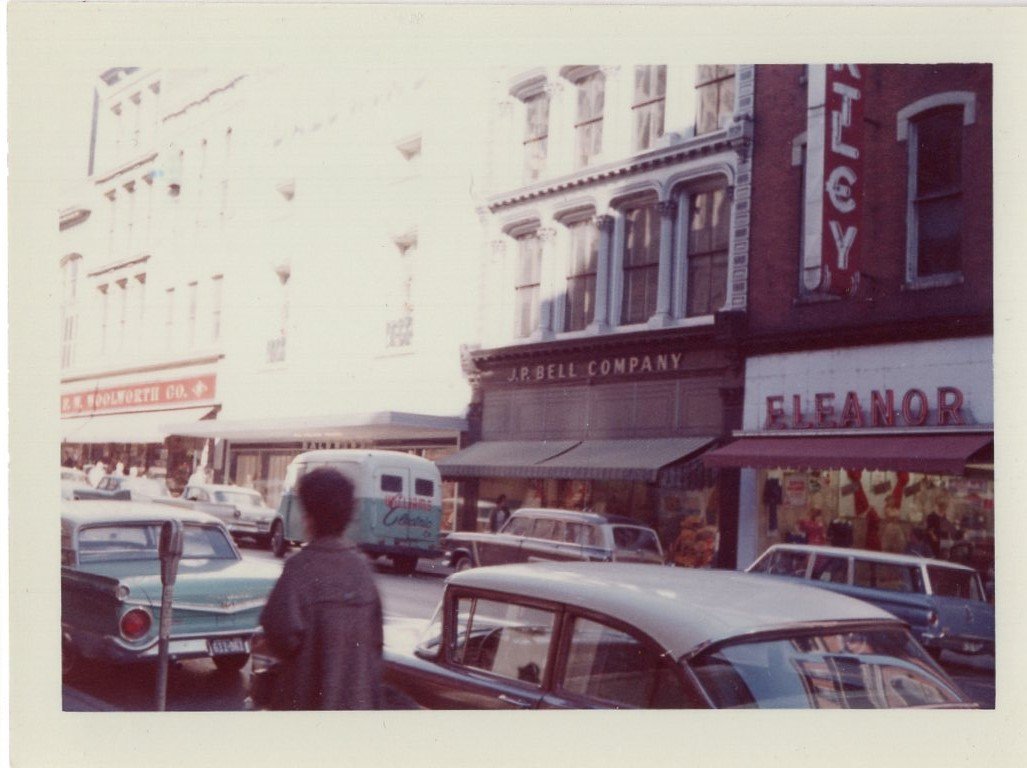
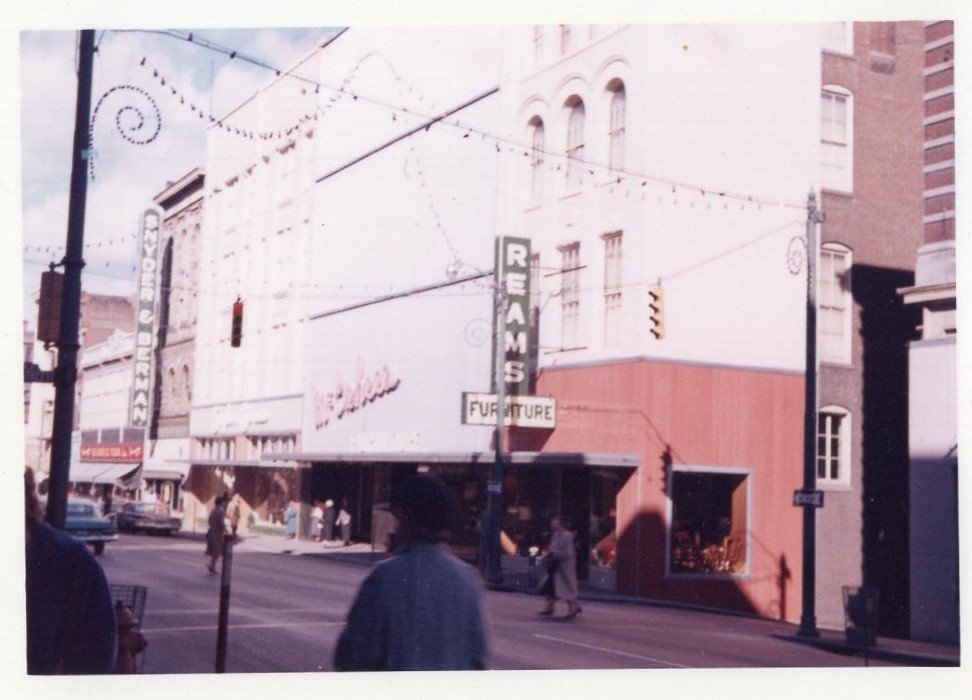
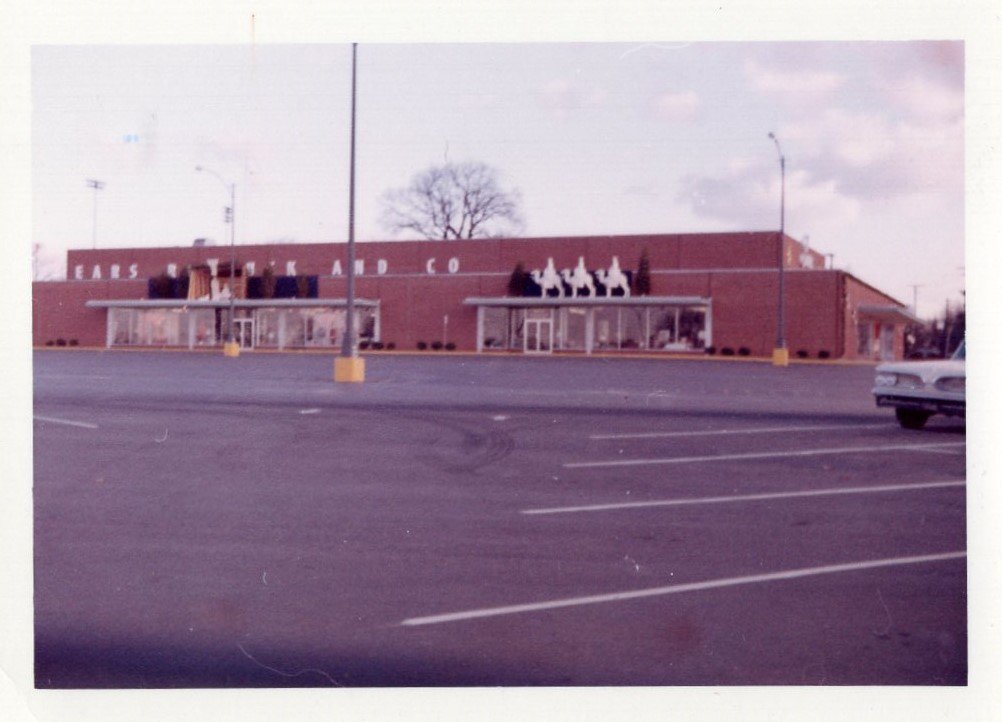
Share Your Story
Do you have any artifacts or information related to holidays in Lynchburg? We would love to hear from you! The Lynchburg Museum System is actively seeking material to illustrate the full history of our city.
Call (434) 455-6226 or email museum@lynchburgva.gov




